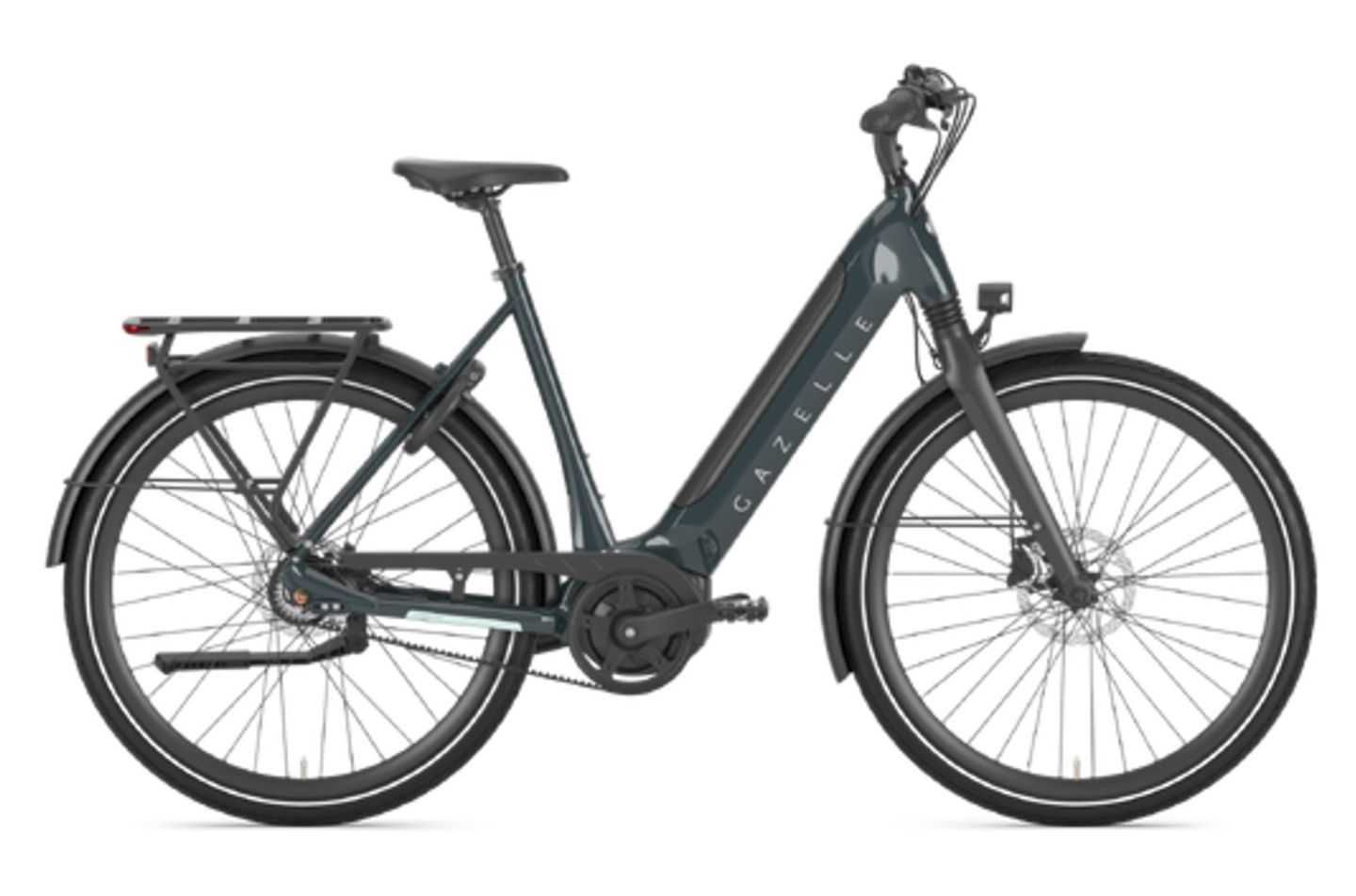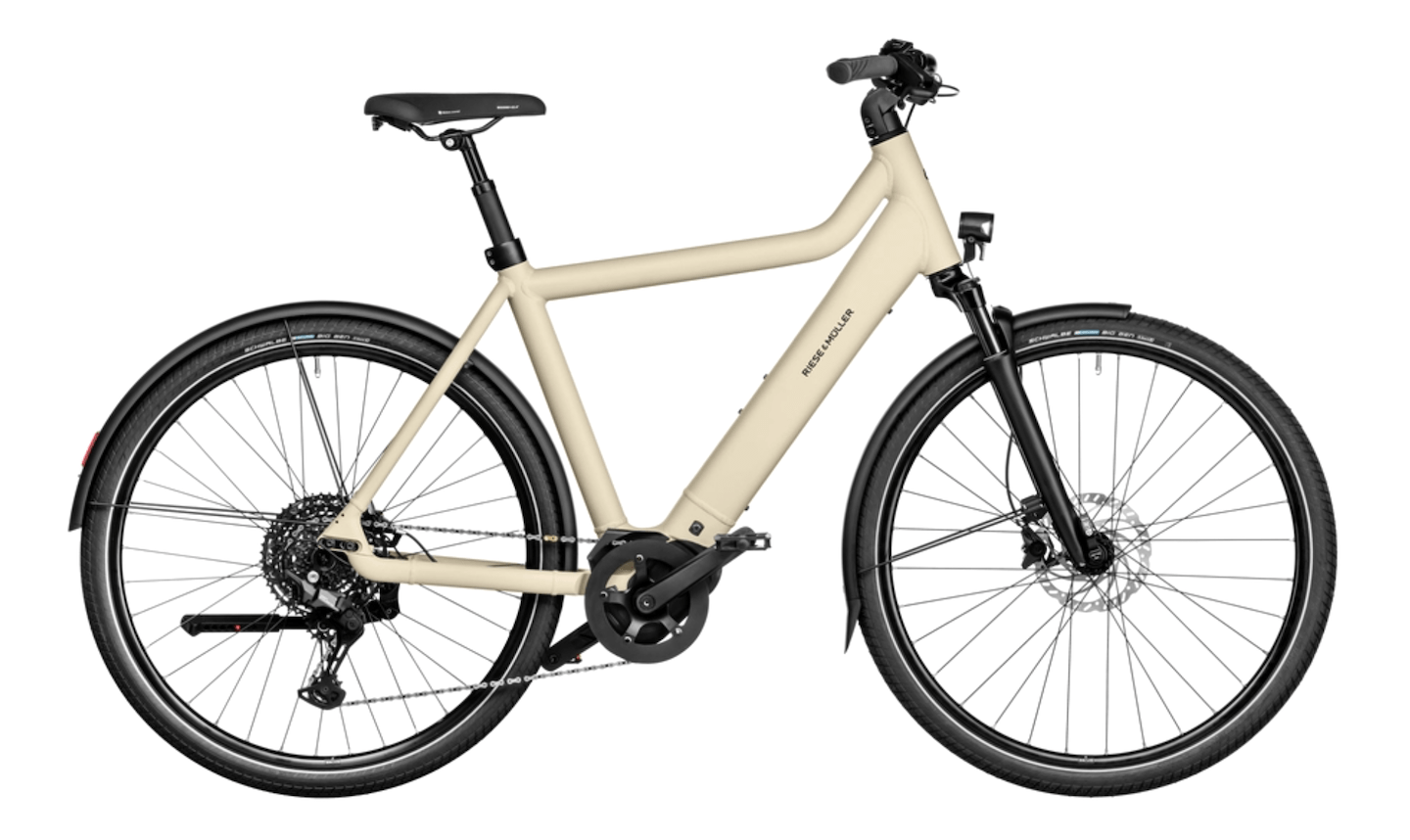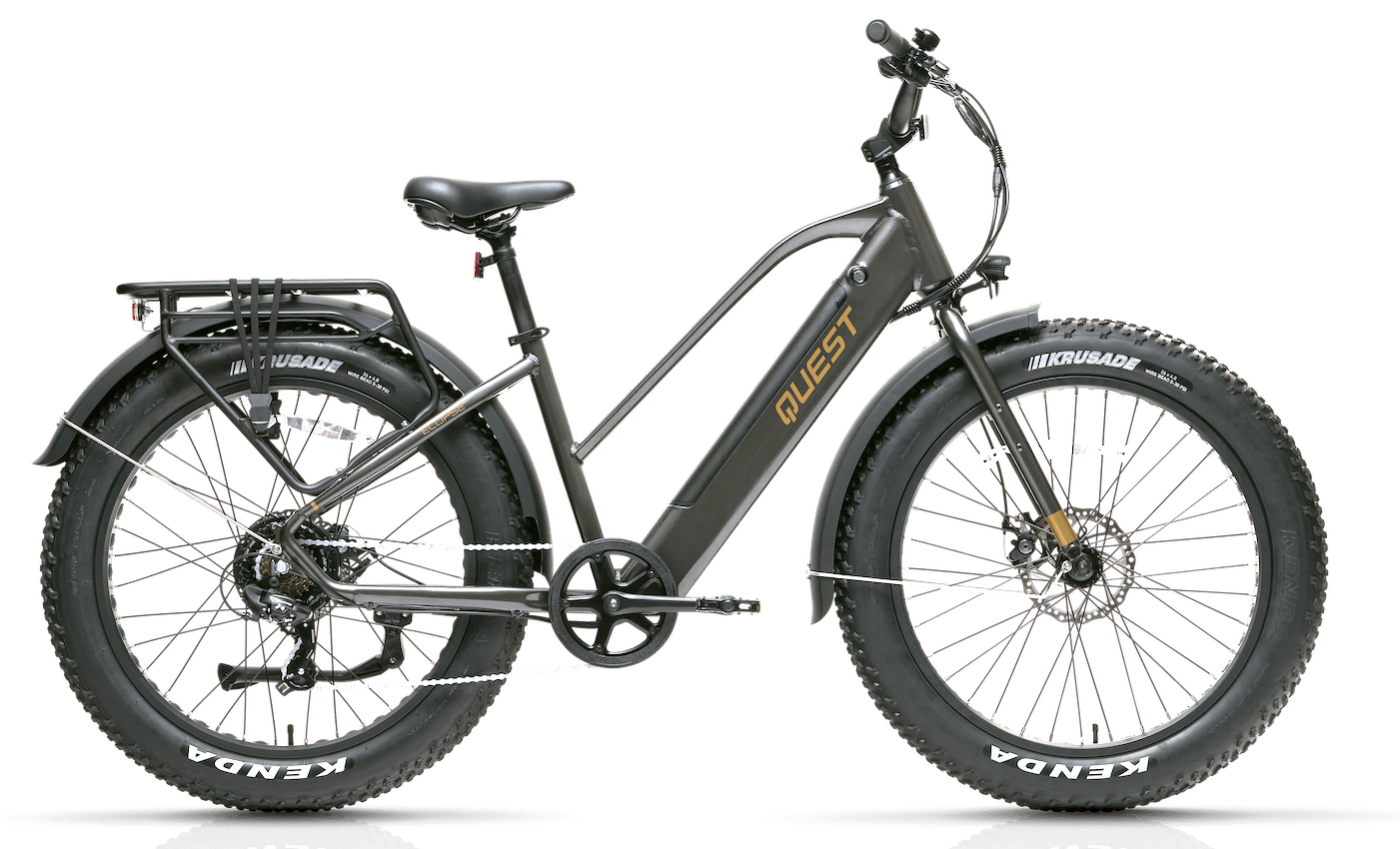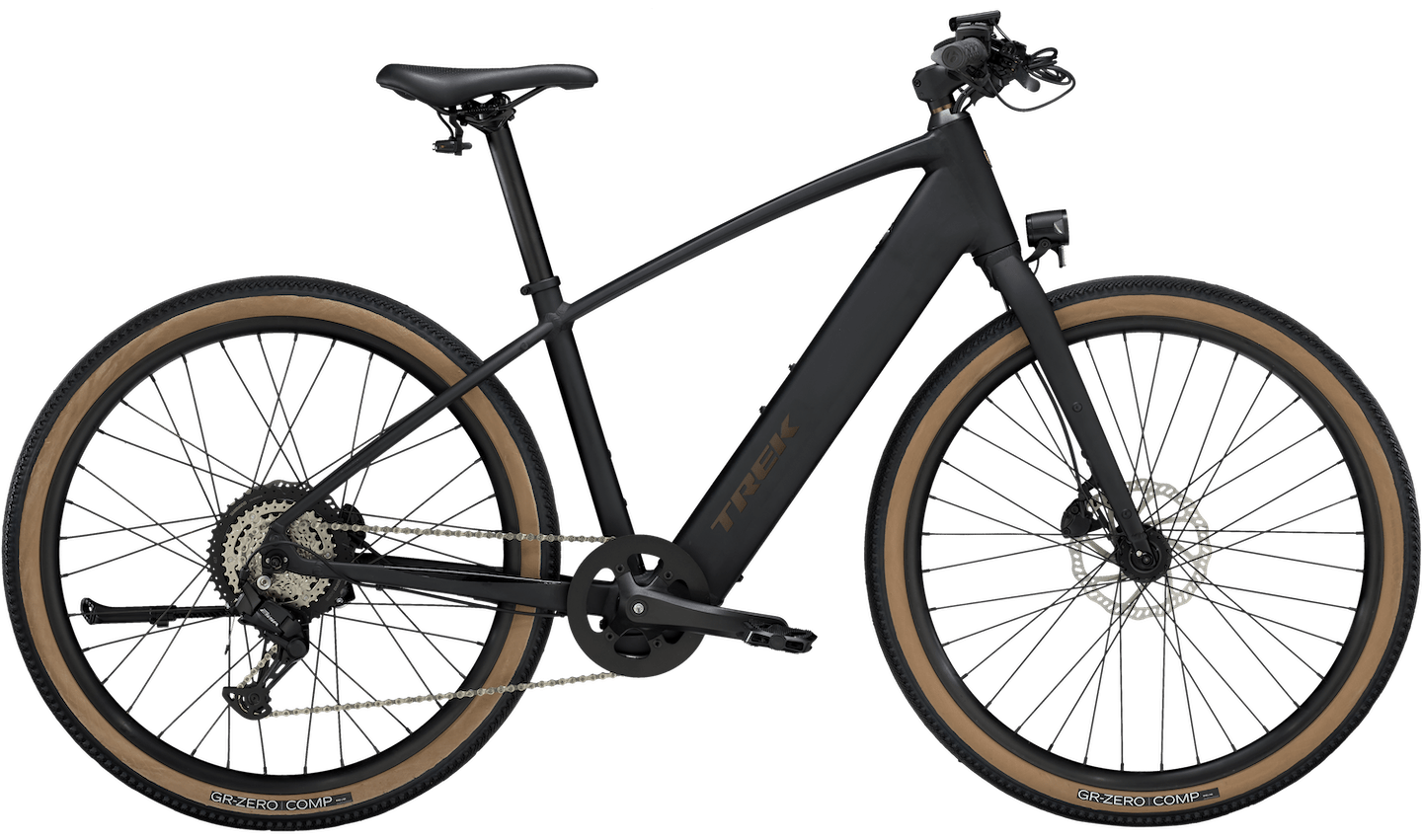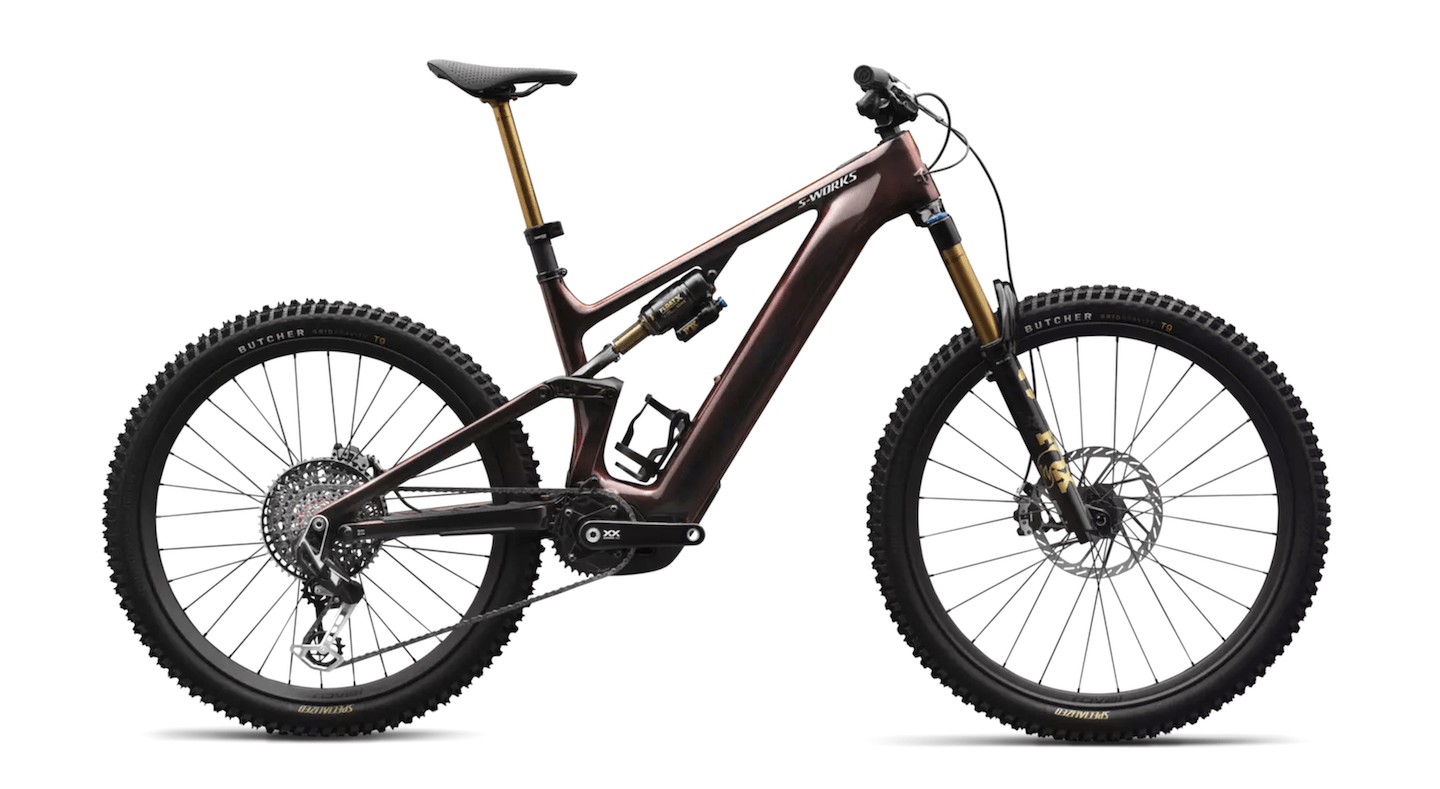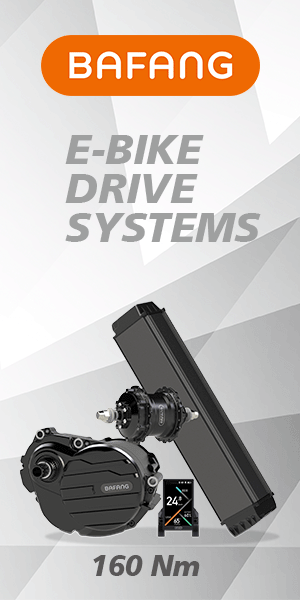November 5, 2020 - When the Dutch municipality of Eindhoven was searching for a cycling-friendly solution to a congested intersection, they didn’t just build a bike lane. They built a cycling landmark.
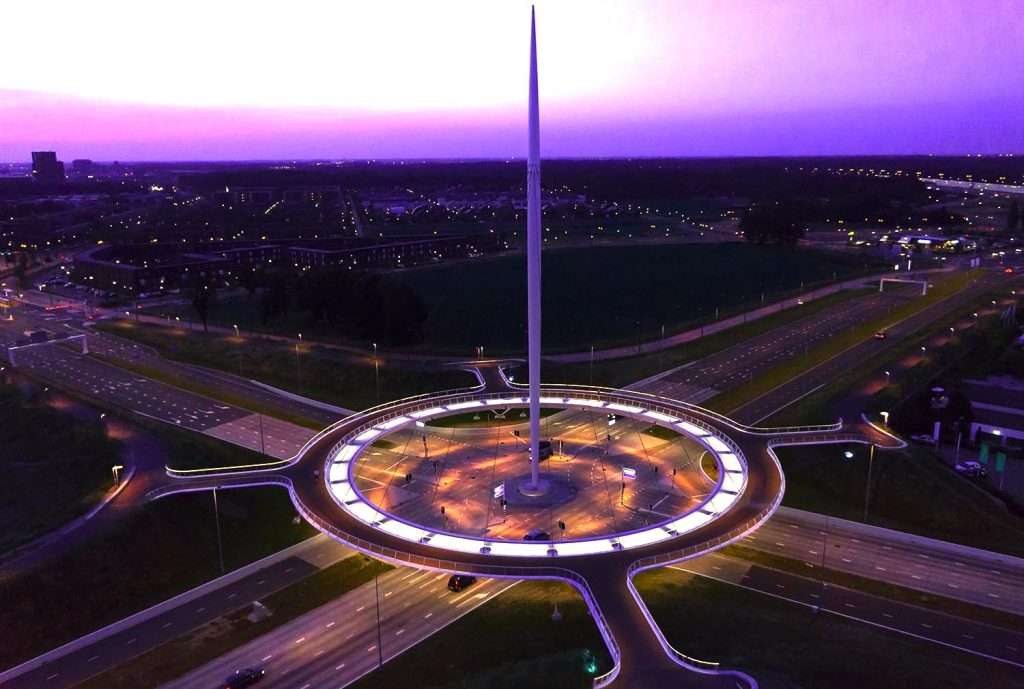
The Hovenring is a unique cable-stayed steel bridge that looks like a floating roundabout and was designed by ipv Delft Creative Engineers, one of the leading bridge design and engineering firms in the Netherlands. Rising above motor vehicle traffic, the Hovering creates space for people who are walking and cycling to cross the intersection without needing to interact with cars and trucks.
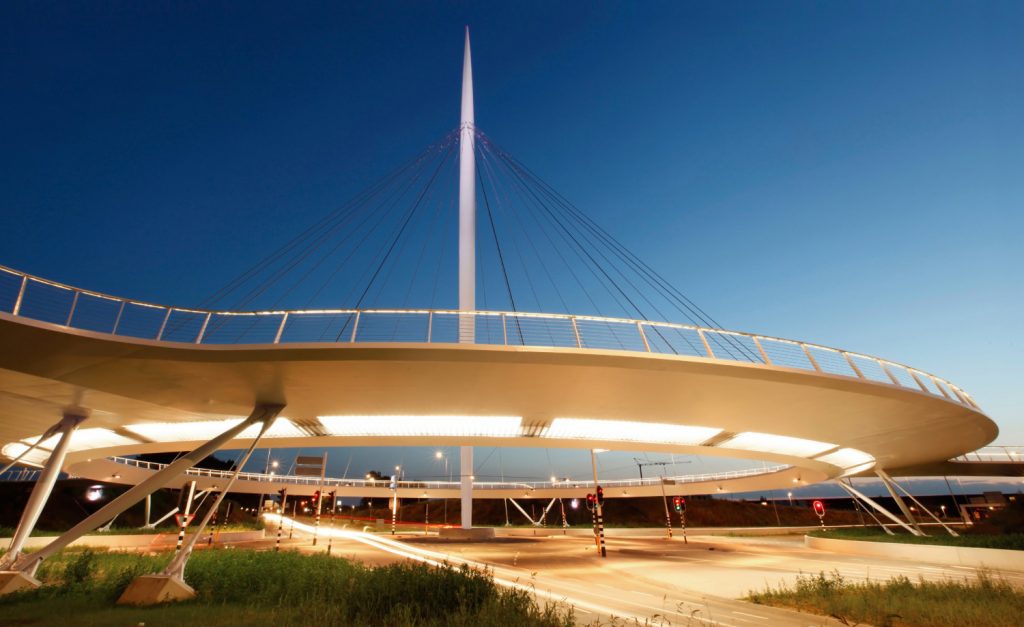
The original intersection was not designed with space for people walking and cycling, and traffic was increasing from nearby residential developments and the airport. A tunnel to accommodate more people was out of the question because of high water levels, which led to plans for a bridge.
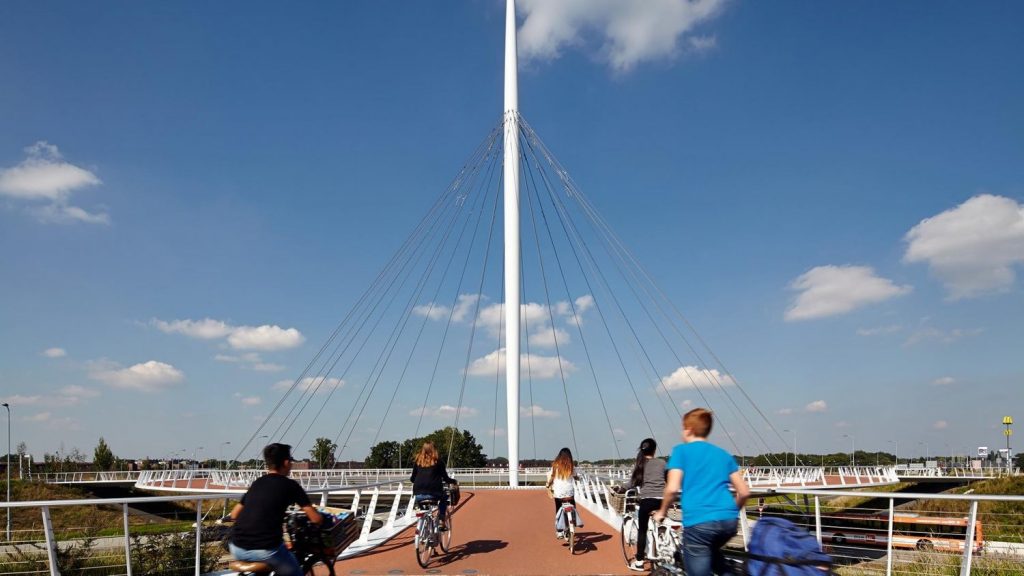
The Hovenring was built around a 70-metre high pylon that is connected to the deck by 24 steel cables. The deck of the bridge is 72-metres in diameter and wide enough to allow for two pairs of cyclists to pass each other while riding. The streamlined design also creates unobstructed views for motorists using the intersection below.

The designers at ipv Delft managed to achieve moderate grading between 2-3% on the entry and exit ramps, even with limited space available. This had been a concern for advocates, who were worried ramps would be too steep. People were invited to participate in ramp tests to ensure everyone was comfortable with the slopes. The intersection below the bridge was also lowered into the ground by 1.5m to reduce the required height of the bridge.
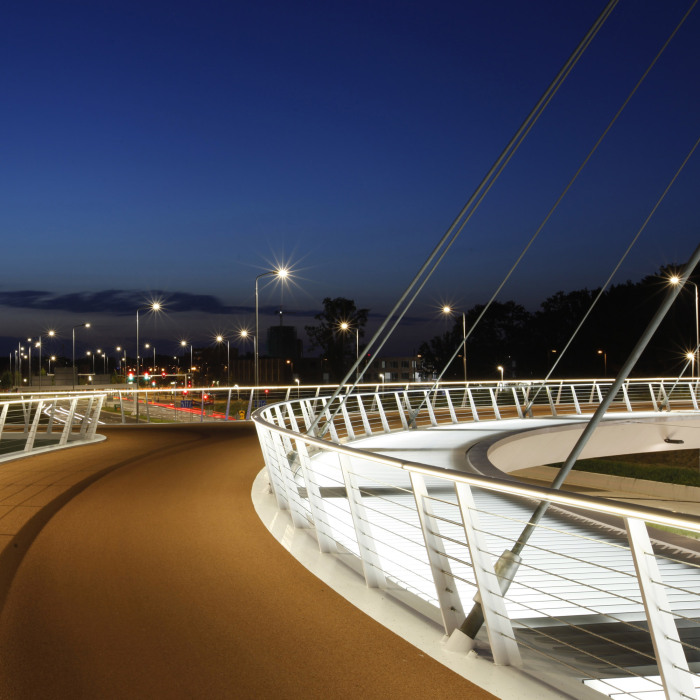
After approximately 16 months of construction, and some adjustments to the cables due to wind vibrations, the bridge opened officially in June 2012. The cost of the bridge was €6.3 million and it is used by between 4,000 and 5,000 people each day.
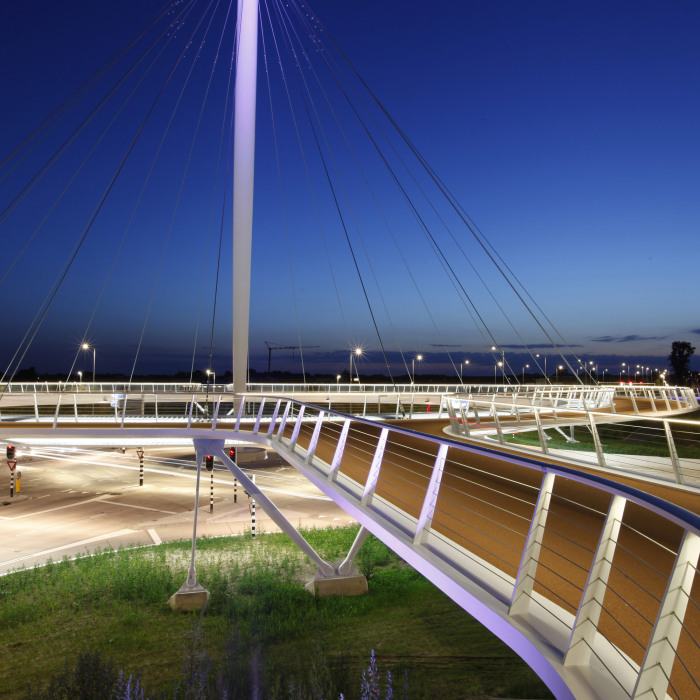
The Hovenring creates a unique and comfortable cycling experience that is also an architectural marvel, especially when it is illuminated at night. The Dutch are known for their love affair with cycling and the country also boast the world’s largest bicycle garage in Utrecht, that can accommodate over 12,500 bikes.

The Hovenring inspires us all to be creative when it comes to cycling infrastructure and it’s one of many unique cycling bridges designed by ipv Delft. Check out some of the many unique bicycle bridges designed by the Dutch firm including the Swan River bicycle and pedestrian bridge in Perth, Australia and the Nigtevecht bicycle bridge across the Amsterdam-Rhine Canal near the village of Nigtevecht in Holland.
For more information on the Hovering and ipv Delft please visit here.





